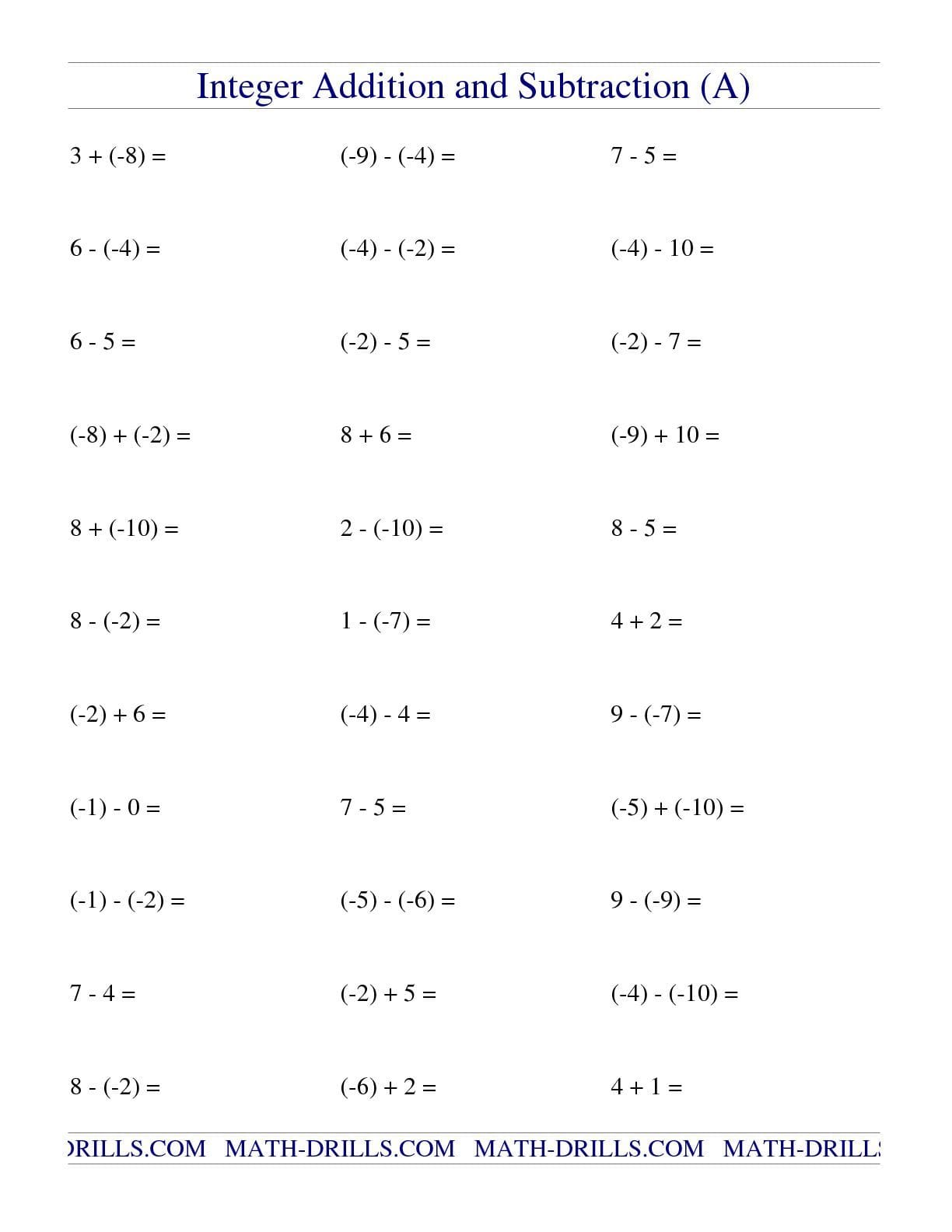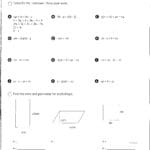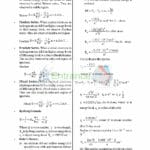Unlock Integer Subtraction Mastery! Download free printable and online subtracting integers worksheets tailored for grades 5-8 and beyond. These resources cover various difficulty levels and include answer keys for self-assessment, ensuring a comprehensive learning experience.
Mastering Integer Subtraction: Why It Matters and How to Excel
Integer subtraction—finding the difference between positive and negative whole numbers, including zero—is a fundamental math skill. It’s essential for understanding how signed numbers interact and has countless real-world applications, from managing finances to analyzing data. This article provides a comprehensive guide to integer subtraction, offering clear explanations, practical examples, and valuable resources like free printable worksheets to help you or your student achieve mastery.
What Are Integers? A Quick Refresher
Integers are whole numbers, both positive and negative, along with zero. They can be visualized on a number line, with positive numbers to the right of zero and negative numbers to the left. Understanding this visual representation is helpful when learning integer subtraction.
Rules of Integer Subtraction: Decoding the Basics
Subtracting integers involves specific rules depending on the signs of the numbers:
- Same Signs: Subtract the absolute values (the numbers without their signs) and keep the common sign. Example: -5 – (-3) = -2
- Different Signs: Subtract the smaller absolute value from the larger one. The answer takes the sign of the integer with the larger absolute value. Example: 7 – (-2) = 9
The “Keep-Change-Change” (KCC) Method: A Simple Trick
The KCC method simplifies integer subtraction:
- Keep the first integer.
- Change the subtraction sign to addition.
- Change the sign of the second integer.
Example: -5 – (+3) becomes -5 + (-3) = -8
Visualizing with a Number Line: A Graphic Approach
A number line can visually represent integer subtraction. Moving left on the number line represents subtraction.
Example: To solve 2 – 5, start at 2 and move five spaces to the left, landing on -3.
Real-World Relevance: Integer Subtraction in Action
Integer subtraction isn’t just a classroom concept; it’s a practical life skill. Consider these examples:
- Temperature Changes: Determining the temperature drop overnight.
- Financial Transactions: Calculating your bank balance after withdrawals.
- Elevation Differences: Finding the difference in height between a mountain and a valley.
Practice Makes Perfect: Utilizing Subtracting Integers Worksheets ([https://www.lolaapp.com/susan-glaspell])
Subtracting integers worksheets provide targeted practice, allowing learners to hone their skills at their own pace. They typically include:
- Clear Instructions and Examples: Step-by-step guidance and illustrative examples.
- Varied Practice Problems: A range of exercises, from basic to complex.
- Answer Keys: Immediate feedback for self-assessment.
These worksheets are particularly helpful for:
- Targeted Practice: Focus on specific areas needing improvement.
- Independent Learning: Self-paced learning and skill development.
- Ongoing Assessment: Track progress and identify areas for review.
Types of Worksheets: A Variety of Approaches ([https://www.lolaapp.com/sybau-meaning-in-text])
Different worksheet types cater to diverse learning styles:
- Number Line Worksheets: Visualize subtraction through movement on a number line.
- Missing Subtrahend Worksheets: Solve for the missing number in subtraction problems.
- Word Problem Worksheets: Apply integer subtraction to real-world scenarios.
- Mixed Operation Worksheets: Integrate subtraction with other math operations.
Worksheets by Grade and Skill Level: Tailored Practice
Worksheets are available for various grade and skill levels:
- Basic (Grades 5-6): Focus on fundamental concepts.
- Intermediate (Grades 6-7): Introduce larger numbers and more complex scenarios.
- Advanced (Grades 7-8 and Beyond): Challenge learners with multi-step problems and advanced applications.
Beyond the Basics: Advanced Strategies and Future Trends
While mastering the fundamental rules is crucial, exploring advanced strategies like adding the opposite (subtracting a number is the same as adding its negative) can further enhance understanding. The field of math education is constantly evolving, and ongoing research likely suggests new and innovative approaches to teaching integer subtraction are continually being developed.
Example: Visualizing 7 – (-2)
Remember, subtracting a negative is the same as adding a positive.
| Problem | Rewritten | Solution |
|---|---|---|
| 7 – (-2) | 7 + 2 | 9 |
Unlocking the Potential: Tips for Effective Learning
- Use Manipulatives: Employ tools like two-color counters or integer chips for visual representation.
- Address Common Mistakes: Identify and correct common errors for improved accuracy.
- Connect to Addition: Reinforce the relationship between subtraction and adding the opposite.
- Challenge Yourself: Explore challenging problems and extension activities.
By integrating these strategies and utilizing the provided resources, learners can build a strong foundation in integer subtraction, setting the stage for future success in mathematics.
















